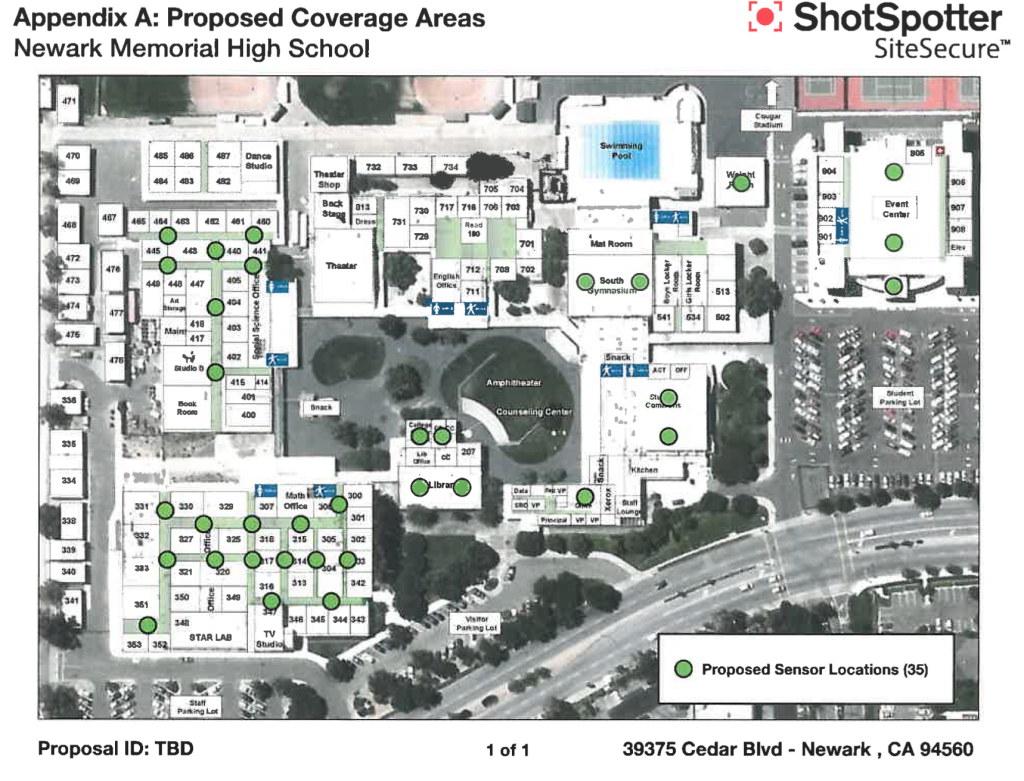In response to a January 28, 2015, public records request and after I sent $1.14 to cover the cost of copies, the Phoenix Police Department sent a copy of its February 11, 2013, non-disclosure agreement with the Federal Bureau of Investigation.
With other non-disclosure agreements from the Minnesota Bureau of Criminal Apprehension, Erie County Sheriff’s Office, San Bernardino County Sheriff’s Office, Baltimore Police Department, and Ventura County Sheriffs Office, we can readily determine what text was redacted from the NDA. Nearly all of the redactions are references to hiding information about the StingRay from the judicial system.
From the bottom of the first page, the words “to employ countermeasures” were redacted from the sentence “Disclosing the existence of and the capabilities provided by such equipment/technology to the public would reveal sensitive technological capabilities possessed by the law enforcement community and may allow individuals who are the subject of investigation wherein this equipment/technology is used to employ countermeasures to avoid detection by law enforcement.”
Near the top of the third page of the NDA, the words “during pre-trial matters, in search warrants and related affidavits, in discovery, in response to court ordered disclosure, in other affidavits, in grand jury hearings, in the State’s case-in-chief, rebuttal, or on appeal, or in testimony in any phase of civil or criminal trial,” were redacted from the sentence “The Phoenix Police Department shall not, in any civil or criminal proceeding, use or provide any information concerning the Harris Corporation wireless collection equipment/technology, its associated software, operating manuals, and any related documentation (including its technical/engineering description(s) and capabilities) beyond the evidentiary results obtained through the use of the equipment/technology including, but not limited to, during pre-trial matters, in search warrants and related affidavits, in discovery, in response to court ordered disclosure, in other affidavits, in grand jury hearings, in the State’s case-in-chief, rebuttal, or on appeal, or in testimony in any phase of civil or criminal trial, without the prior written approval of the FBI.”
At the bottom of the third page, the words “seek dismissal of the case in” were redacted from the sentence “In addition, the Phoenix Police Department will, at the request of the FBI, seek dismissal of the case in lieu of using or providing, or allowing others to use or provide, any information concerning the Harris Corporation wireless collection equipment/technology, its associated software, operating manuals, and any related documentation (beyond the evidentiary results obtained through the use of the equipment/technology), if using or providing such information would potentially or actually compromise the equipment/technology.”
Later in the same paragraph, the words “control or influence over the prosecutorial process” were redacted from the sentence “This point supposes that the agency has some control or influence over the prosecutorial process.”
Also in the same paragraph, the words “prosecuting agency, or agencies” were redacted from the sentence “Where such is not the case, or is limited so as to be inconsequential, it is the FBI’s expectation that the law enforcement agency identify the applicable prosecuting agency, or agencies, for inclusion in this agreement.”
At the bottom of the fourth page, the words “the civil or criminal discovery process” were redacted from the sentence “In the event that the Phoenix Police Department receives a request pursuant to the Freedom of Information Act (5 U.S.C. § 552) or an equivalent state or local law, the civil or criminal discovery process, or other judicial, legislative, or administrative process, to disclose information concerning the Harris Corporation wireless collection equipment/technology, its associated software, operating manuals, and any related documentation (including its technical/engineering description(s) and capabilities), the Erie County Sheriff’s Office will immediately notify the FBI of any such request telephonically and in writing in order to allow sufficient time for the FBI to seek to prevent disclosure through appropriate channels.”
Other less interesting redactions included the names of people in the Phoenix Police Department, the name of the Assistant Director of the FBI’s Operation Technology Division (Amy Hess), and the phone numbers for the Assistant Director of the FBI’s Operation Technology Division and the Unit Chief of the Tracking Technology Unit.
